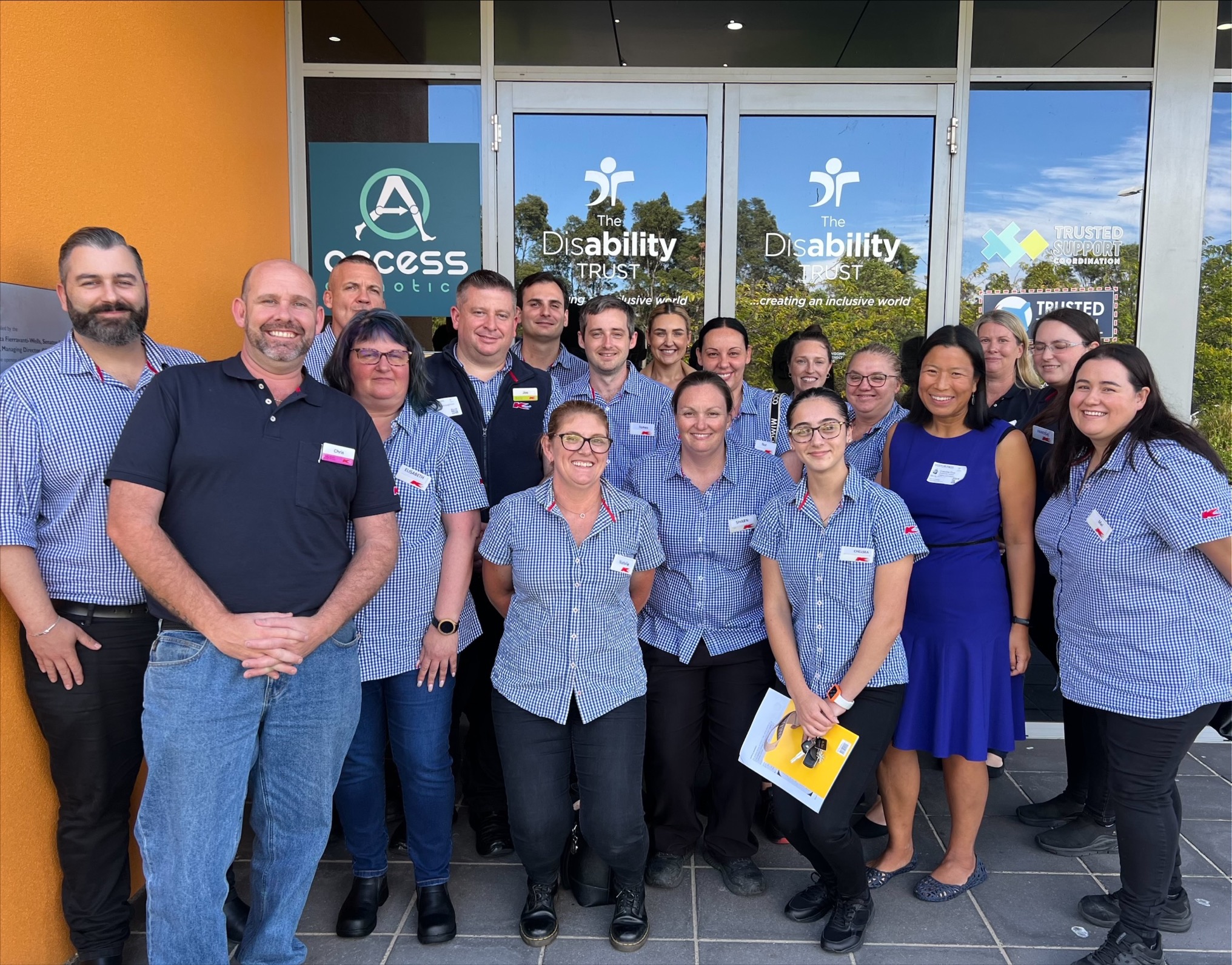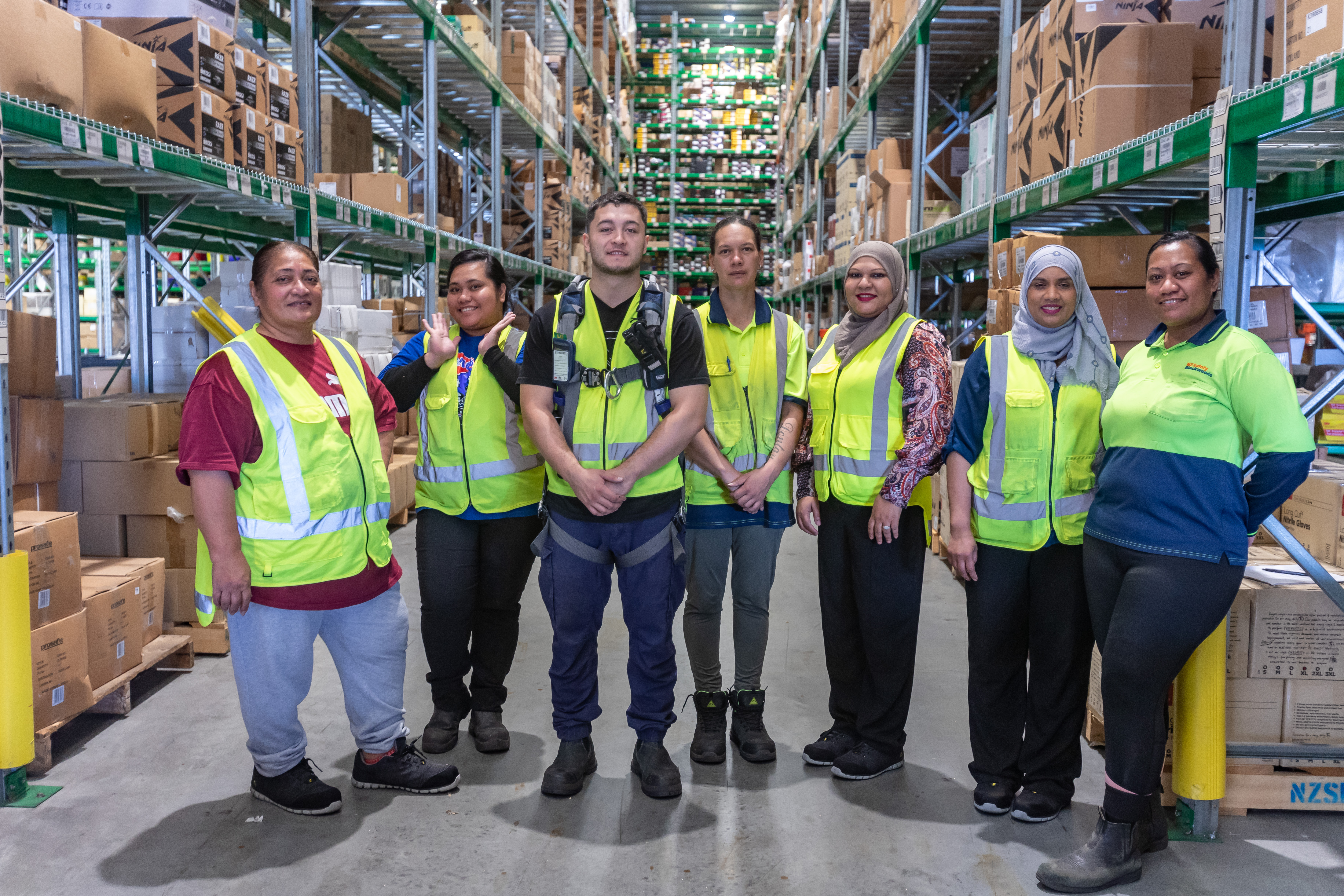
Diversity and inclusion
Our customers and stakeholders are diverse, and to gain the best insights into their needs and expectations, diverse and inclusive teams are required. A diversity of perspectives and backgrounds also strengthens creativity in teams. Creating an environment that attracts, retains and develops team members with a wide range of strengths and experiences ensures Wesfarmers is well equipped for future growth.
Wesfarmers strives to provide an inclusive work environment where everyone feels respected and safe. We recognise, recruit and support many facets and combinations of diversity across Wesfarmers, consistent with the broader community. The Wesfarmers Diverse, Inclusive and Respectful Workplaces Policy fosters diversity and supports inclusion at all levels across the Group.
For Wesfarmers to derive benefits of this diversity, team members must understand the benefits of inclusion and act with inclusivity. To support this ambition, Wesfarmers is a member of various expert diversity and inclusion research organisations, including the Diversity Council of Australia and Catalyst. Wesfarmers shares best practice and research from these organisations across the Group.
Wesfarmers continues to focus on achieving gender balance across all divisions, at all levels. We are committed to increasing the employment of Aboriginal and Torres Strait Islander people. We track metrics on these two focus areas. Our commitment to diversity and inclusion extends to all people and perspectives, and the businesses focus efforts on initiatives relevant to their workforce, industry and the communities in which they operate.
Inclusion
The Wesfarmers Diverse, Inclusive and Respectful Workplaces Policy requires the Board to set measurable objectives that are reported in the Corporate Governance Statement each year. The objectives, which are used to measure progress and are reviewed annually by the Board, are:
- to be and to offer an inclusive workplace
- to ensure equitable and transparent people processes and practices
- to increase or sustain gender representation to achieve gender balance in teams.
Across the Group, each division develops its own diversity and inclusion strategy tailored to the specific objectives of that division. Some areas of focus from across the Group are outlined below. Progress against the third objective, to increase or sustain gender representation to achieve gender balance in teams, is described here.
For more information on the businesses’ diversity and inclusion focus areas and initiatives, refer to the divisional pages here.
To be and to offer an inclusive workplace
Inclusive workplaces unlock the benefits of diverse workforces. Inclusion in the workplace is achieved when a diversity of people feel they are respected, connected, contributing and progressing.
Building capability in inclusive leadership practices continues to be a focus area for a number of the Wesfarmers businesses, to ensure managers and leaders are equipped with the skills to foster a sense of belonging among increasingly diverse teams.
Some areas of focus over the past year include:
- reviewing codes of conduct, policies and processes in line with legislative changes, including the Respect@Work Act, Fair Work Act and other changes – this work is ongoing
- inclusion and cross-cultural training for leaders and team members
- driving gender balance across STEM roles, with initiatives including a technology gender balance SteerCo and summer vacation programs with strong female representation (minimum of 50 per cent)
- introducing initiatives for inclusion of lesbian, gay, bisexual, transgender, intersex, queer and asexual (LGBTIQA+) team members and customers across all divisions. This includes policy reviews, support networks, partnerships with key organisations such as Pride in Diversity, listen and learn sessions with team members, marking days of significance and awareness programs
- initiating listen and learn sessions and online modules to build leader and team member confidence in:
- identifying, supporting and assisting customers with a disability, for example with accessing products or services
- enhancing leader and team member understanding of inclusion for team members living with disability.
To ensure equitable and transparent processes and practices
Wesfarmers' businesses have implemented actions to ensure their practices identify, support and encourage a diversity of strengths, styles and working arrangements for all team members. These practices differ by business depending on team member needs, industry and business priorities.
Some areas of focus over the past year include:
- improved recruiting for inclusion and representation across broader facets of diversity, including gender balance and disability through external partnerships
- parental and carer support, including transition support and online resource centres for caregivers
- recognising and supporting team members of all ages and at different stages of their careers. This includes mature age team members by providing support for the transition to retirement
- supporting flexible working arrangements, with all Wesfarmers' businesses continuing to evolve ways of working, including adapting to new hybrid models that leverage the best of in-office and working from home.
Gender pay equity
Wesfarmers is committed to pay equity. Our definition of pay equity is that team members, regardless of gender, should receive equal remuneration for work of equal value. When setting and reviewing team member pay, reference is given to market forces, including; different rates of pay in different industries and locations, the relative supply and demand for different qualifications, talent or specialist skills and individual performance and experience. Reference is also given to relevant collective agreements, as required.
In line with Wesfarmers’ commitment to pay equity, a Group review of our salaried workforce’s gender pay equity has been conducted annually since 2010 focusing on annualised fixed pay. The results of which are reviewed by managing directors across the Group and the Board. Our pay equity review intentionally excludes team members covered by collective agreements given these instruments determine pay for this cohort, therefore excluding gender as a potential differentiator. We use a detailed methodology to calculate any gender pay gaps. We are committed to understanding any gaps, and areas of concern are subject to further scrutiny, explanation to the Board and, where warranted, action. Based on our review of like for like sized roles1 for the 2023 financial year, our gender pay gaps are generally less than five per cent across the Group.
Wesfarmers also participates in the annual Workforce Gender Equality Agency (WGEA) reporting. In February 2023, WGEA reported that the base salary national gender pay gap, using the Australian Bureau of Statistics Survey of Average Weekly Earnings2 is 13.3 per cent.
Read the Wesfarmers Gender Pay Statement for the 2022-23 WGEA Reporting here.
Our focus remains on improving gender balance across all levels of seniority in the Group, particularly women’s representation in leadership roles as an important driver of future pay equity outcomes.
1 Across the Group, recognised job evaluation methodologies are used to establish job size and therefore identify like for like sized roles.
2ABS data is base salary for full-time workers, excluding overtime, bonuses and additional payments.
Team member standards
Wesfarmers is committed to workplaces that treat all team members with respect and fairness. The policies and frameworks that support the Group’s day-to-day operations are designed to observe and safeguard all relevant universally recognised human rights.
Each division must comply with the principles of the Wesfarmers Code of Conduct and the Wesfarmers Diverse, Inclusive and Respectful Workplaces Policy or incorporate these principles into their policies and procedures.
In 2023, the Wesfarmers Code of Conduct was enhanced to include greater clarity on discrimination and inclusion, and reference local legislation and universally recognised human rights. The Wesfarmers Diverse, Inclusive and Respectful Workplaces Policy was also expanded. It now provides more detail about equality and protecting diversity. Divisions are required to ensure their policies and practices align with the Wesfarmers Policy.
Work has progressed across the Group on proactive prevention of sexual harassment within our workplaces. Examples include the addition of targeted questions in engagement surveys; providing education and support to leaders on standards, processes and tools available; providing a range of complaint options; compliance and behavioural training; consistent reporting; and improved policies and communications.
GRI 3-3, GRI 405-1, GRI 406-1

